Information Center
- Main page
- Information Center
- Government News
Government News
- Source
- 정책브리핑
- Date
- 2025.03.28
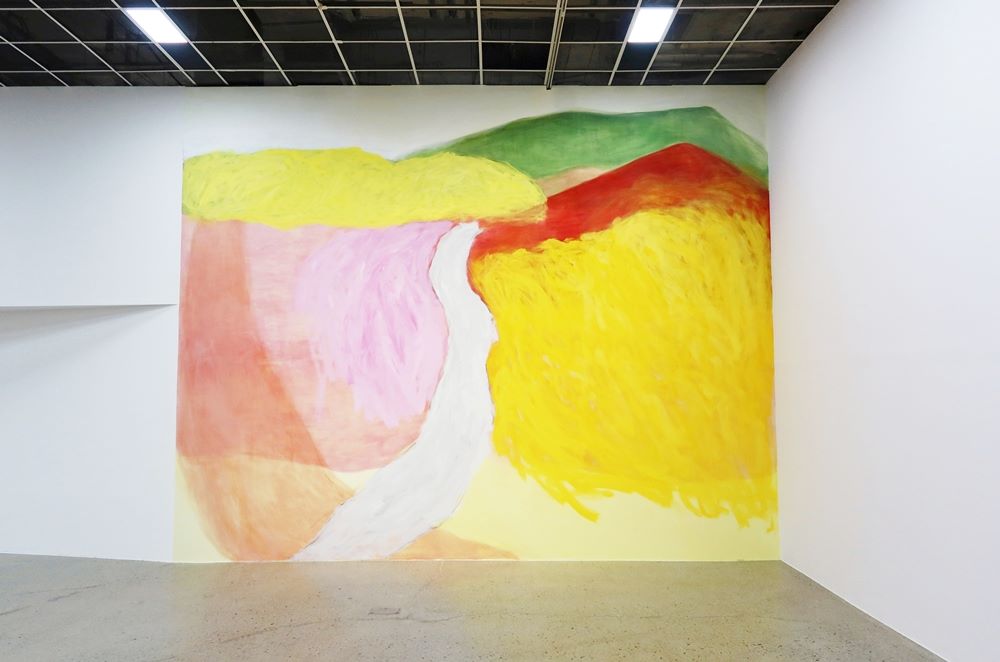
"Asan" (2025), a mural by artist Yoon Jongsuk, welcomes visitors at the entrance to the exhibition "Colors of Water" at the National Museum of Contemporary Art in Cheongju, Chungcheongbuk-do Province. Yoon said she drew the scenery of her hometown Asan, Chungcheongnam-do Province, and the images that occurred in the moment without sketches. (Charles Audouin)
By Charles Audouin
An exhibition presents watercolor paintings in the country's modern and contemporary art.
The National Museum of Contemporary Art (MMCA) in Cheongju, Chungcheongbuk-do Province, since March 21 has hosted "Colors of Water."
On display are 99 works by 34 domestic artists of modern and contemporary art all owned by the museum, with 20 pieces exhibited to the public for the first time.
MMCA Director Kim Sunghee on March 18 told a media event at the MMCA Cheongju, "This exhibition is the first of its kind at the MMCA to focus on watercolor paintings," adding, "By highlighting the unique traits of such paintings familiar to the public, we sought to establish it as an independent and complete genre."
The gist of the exhibition is the aesthetic features of watercolor paintings such as permeation, spreading, transparency and immediacy, showing how these elements have developed from modern to contemporary art.
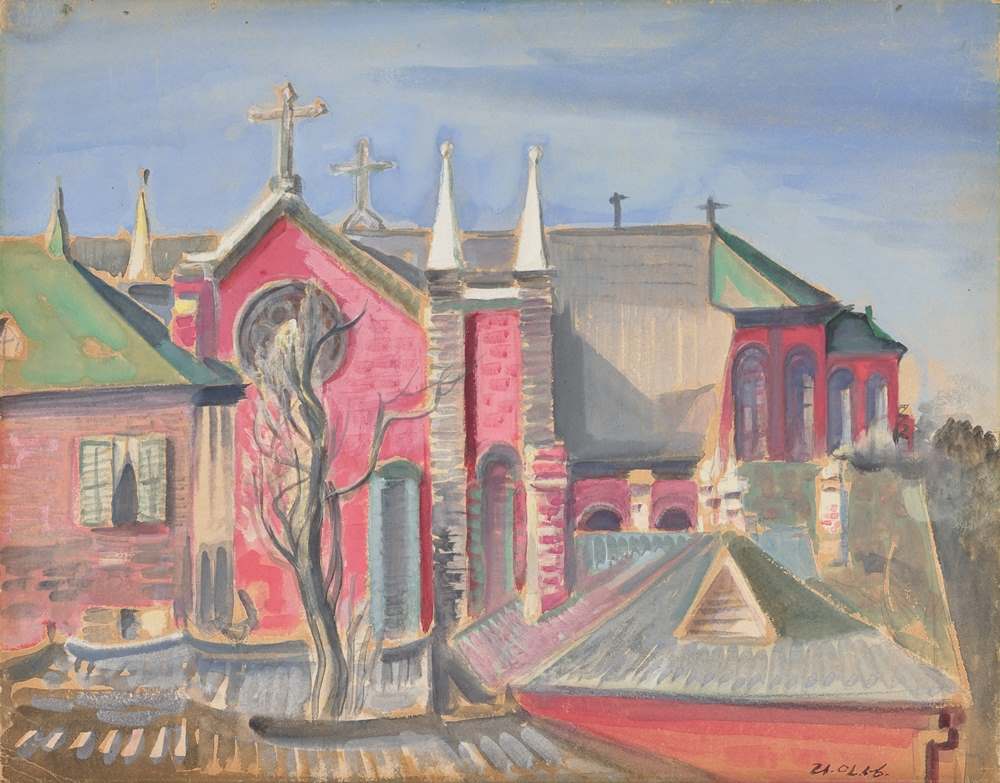
"Kyesan-dong Cathedral" is a painting by Lee Inshung from the 1930s introduced at the MMCA Cheongju. Using the technique of opaque watercolor techniques and expressions of post-impressionism, Lee experimented with methods of expression to win recognition in the domestic art circle. (MMCA)
The exhibition comprises three parts.
The first shows how watercolor paintings earned their place in the country the early 1900s, a time when artists brought their canvases outside to observe nature and create such works.
Seo Dongjin, who held the nation's first exhibition of watercolor paintings, interpreted the scenery of downtown Daegu. Son Ilbong, who won an award in the genre at the Joseon Art Exhibition, showcased landscapes and still lifes with Western painting techniques.
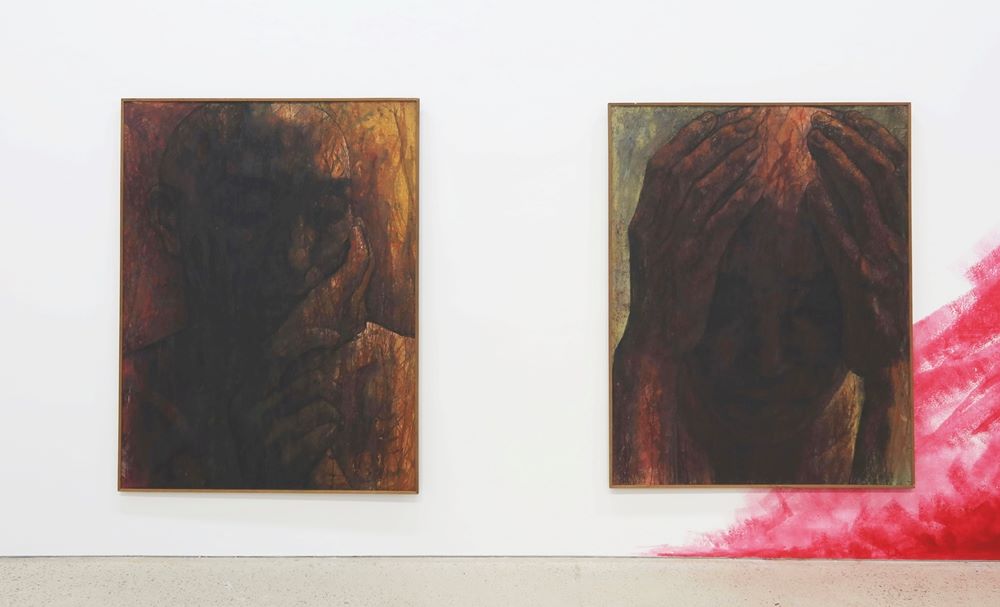
Works by artist Kim Myungsook at "Colors of Water" (Charles Audouin)
The second part exhibits works featuring new attempts at watercolor painting given the shift of the Korean art arena toward oil painting. Certain pieces stand out by attempting experimental expressions by breaking away from traditional techniques and combining diverse media. The artists not only used watercolors to describe the natural environment but also their inner contemplation and mental states.
Artist Ryu In conveyed the anxiety of existence and the times through layers of colors. Kim Myungsook depicted pain and reality in a sharp and direct manner.
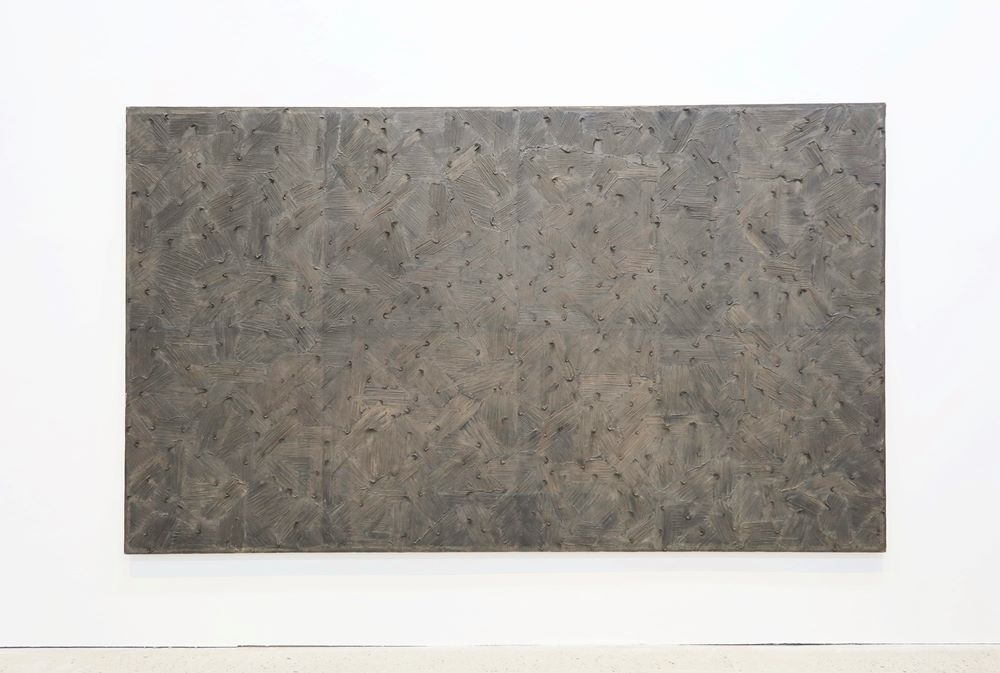
"No. 355-86" (1986) by Park Seobo, part of the exhibition "Colors of Water," uses the method of scratching and sliding on a black screen. (Charles Audouin)
The third and final part shows the monochrome trend that hugely affected the Korean art scene of the mid-1970s. In this era, watercolors showed diversity in form and material, creating a boom in abstract painting.
Standout artists in this section include Kim Choungza, who adds a sense of color by using permeation and drizzling of paints, and Quac Insik, who uses the transparent and see-through properties of watercolor painting and paper to express overlapping flower petals.
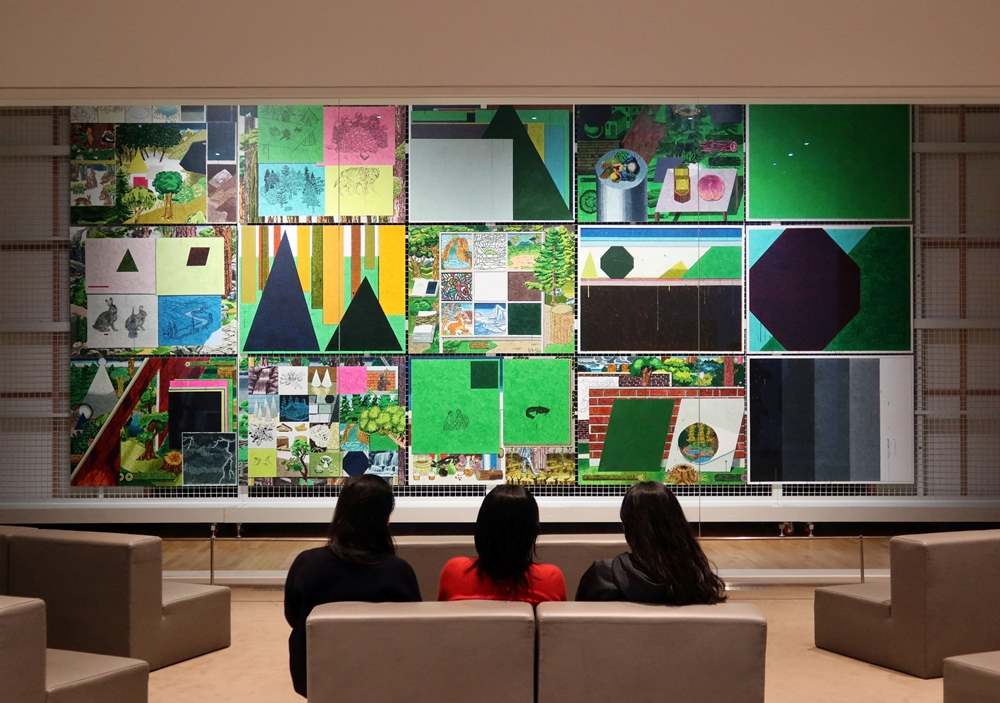
"Parallel Paths of Day-Night" by Jeon Hyunsun is prominently displayed on the second floor of the MMCA Cheongju. This large-scale watercolor painting was created through the internet by collecting images that can be reorganized freely. (Charles Audouin)
Joung Jaeim, the curator who led the exhibition, said, "Watercolor painting isn't limited to a simple still life or landscape but is a unique medium through which artists explore their own formative language."
"We hope you appreciate the paintings at the exhibition and take time out to draw together; this offers an escape from the heavy and hectic daily routine for a moment and immerse yourself in the clear and refreshing world of watercolors."
The exhibition runs through Sept. 7. Admission is KRW 2,000.
The MMCA Cheongju was opened in December 2018 as the fourth branch of the MMCA and first in the provinces after those in Gwacheon, Gyeonggi-do Province, Deoksugung Palace and Seoul. Using the building of an old tobacco factory that ran for half a century, this museum displays collections not generally open to the public. Getting there usually takes two hours by car from Seoul. |
caudouin@korea.kr